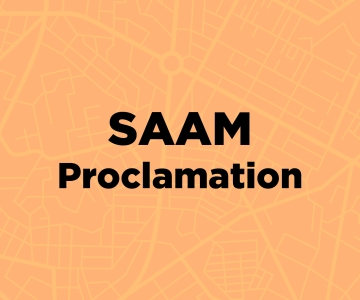Last Updated: August 11, 2015
Primary Prevention on Campus
Campus Policy Information
Statistics
Alcohol Use and Sexual Violence
For Administrators
For Student Activists
For Law Enforcement
General Campus Resources
Primary Prevention on Campus
American College Health Association. Shifting the Paradigm: Primary Prevention of Sexual Violence.
Interview with Indiana Campus Sexual Assault Primary Prevention Project about using communication to prevention violence on campus.
U.S. Department of Education Higher Education Center. Getting Started on Campus: Tips for New Prevention Coordinators.
U.S. Department of Education Higher Education Center. Preventing Violence and Promoting Safety in Higher Education Settings: Overview of a Comprehensive Approach.
Oregon Attorney General’s Sexual Assault Task Force. Recommended Guidelines for Comprehensive Sexual Assault Response and Prevention on Campus.
Virginia Tech Bystander Intervention Playbook.
Campus Policy Information
Violence Against Women Act 2013, National Alliance to End Sexual Violence. This includes a listing of major changes in VAWA related to Sexual Assault.
The Clery Center for Security on Campus
Title IX, Know Your IX. Title IX of the 1972 Education Amendments requires colleges and universities receiving federal funding to combat gender-based violence and harassment, and respond to survivors’ needs in order to ensure that all students have equal access to education.
Handbook for Campus Crime Reporting
U.S. Department of Justice, Office of Justice Programs, National Institute of Justice. (2005). Sexual Assault on Campus: What Colleges and Universities Are Doing About It.
Statistics
Note: This list is by no means exhaustive. There are numerous studies on sexual violence on campus. Visit the NSVRC’s searchable online library to find additional articles and information.
National Sexual Violence Resource Center Campus Sexual Assault Fact Sheet (2015)
U.S. Department of Education. Campus Security Data Analysis Cutting Tool.
This analysis cutting tool was designed to provide rapid customized reports for public inquiries relating to campus crime data. The data are drawn from the Office of Postsecondary Education of the U. S. Department of Education Campus Security Statistics Website database to which crime statistics are submitted annually, via a Web-based data collection, by all postsecondary institutions that receive Title IV funding (i.e., those that participate in federal student aid programs) as required by the Clery Act.
Fisher, B.S., Cullen, F.T., & Turner, M.G. (2000). The Sexual Victimization of College Women. National Institute of Justice, Bureau of Justice Statistics.
Findings from this report include:
- It is estimated that the percentage of completed or attempted rape victimization among women in higher educational institutions may be between 20% and 25% over the course of a college career.
- Among college women, 9 in 10 victims of rape and sexual assault knew their offender.
- Almost 12.8% of completed rapes, 35% of attempted rapes, and 22.9% of threatened rapes happened during a date.
- 2.8% experienced either a completed rape (1.7%) or an attempted rape (1.1%) during the six-month period in which the study was conducted. Of victims, 22.8% were victims of multiple rapes. If this data is calculated for a calendar year period, nearly 5% of college women are victimized during any given calendar year.
- It is estimated that for every 1,000 women attending a college or university, there are 35 incidents of rape each academic year.
- Off-campus sexual victimization is much more common among college women than on-campus victimization. Of victims of completed rape 33.7% were victimized on campus and 66.3% off campus.
- Less than 5% of completed or attempted rapes against college women were reported to law enforcement. However, in 2/3rds of the incidents the victim did tell another person, usually a friend, not family or school officials.
Krebs, C.P., Lindquist, C.H., Warner, T.D., Fisher, B.S., & Martin, S.L. (2007). The Campus Sexual Assault (CSA) Study. National Institute of Justice.
Findings from this report include:
- Many women (88%) have never consumed a drink left unattended or consumed a drink given to them by a stranger (76%).
- One-quarter of the sample (25%) reported consuming alcohol or drugs before sex at least once a month, and slightly fewer (23%) were drunk or high during sex at least once a month.
- Eighteen percent experienced an attempted (13%) and/or completed (13%) sexual assault since entering college.
- Among the total sample, 5% experienced a completed physically forced sexual assault, but a much higher percentage (11%) experienced a completed incapacitated sexual assault.
- Sexual assaults were most likely to occur in September, October and November, on Friday or Saturday nights, and between the hours of midnight and 6:00 a.m.
- Most victims of physically forced or incapacitated sexual assault were assaulted by someone they knew (79% and 88%).
- Freshmen and sophomores are at greater risk for victimization than juniors and seniors.
Mohler-Kuo, M., Dowdall, G., Koss, M., & Wechsler, H. (2004). Correlates of Rape While Intoxicated in a National Sample of College Women. Journal of Studies on Alcohol, 65, 37-45.
Findings from this report include:
- In one study, one in 20 (4.7%) women reported being raped in college since the beginning of the year – a period of approximately 7 months – and nearly three quarters of those rapes (72%) happened with the victims were so intoxicated they were unable to consent or refuse.
- One study found that students living in sorority houses (3 times at risk) and on-campus dormitories (1.4 times at risk) were more likely to be raped than students living off-campus.
- Women from colleges with medium and high binge-drinking rates had more than a 1.5-fold increased chance of being raped while intoxicated than those from schools with low binge-drinking rates.
- Women who had practiced binge-drinking in high school had an increased likelihood of rape while intoxicated.
Alcohol Use and Sexual Violence
National Online Resource Center on Violence Against Women (VAWnet) Applied Research Forum.
• Alcohol and Sexual Violence Perpetration.
National Sexual Violence Resource Center
Key Findings: Exploring Alcohol Policy Approaches to Prevent Sexual Violence
For Administrators
For Student Activists
For Law Enforcement
General Campus Resources
California Coalition Against Sexual Assault Campus Program



